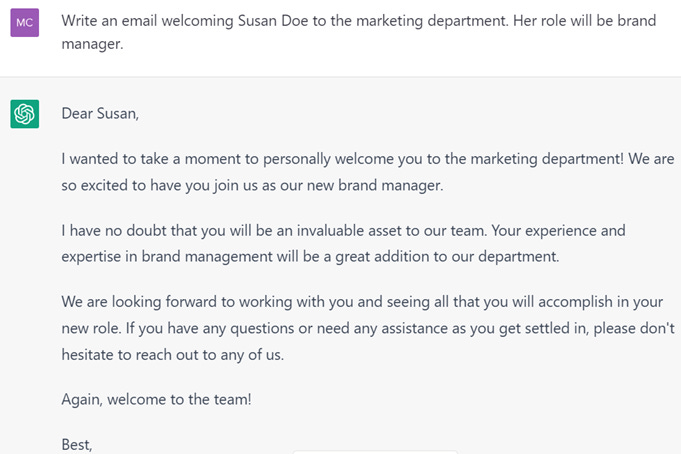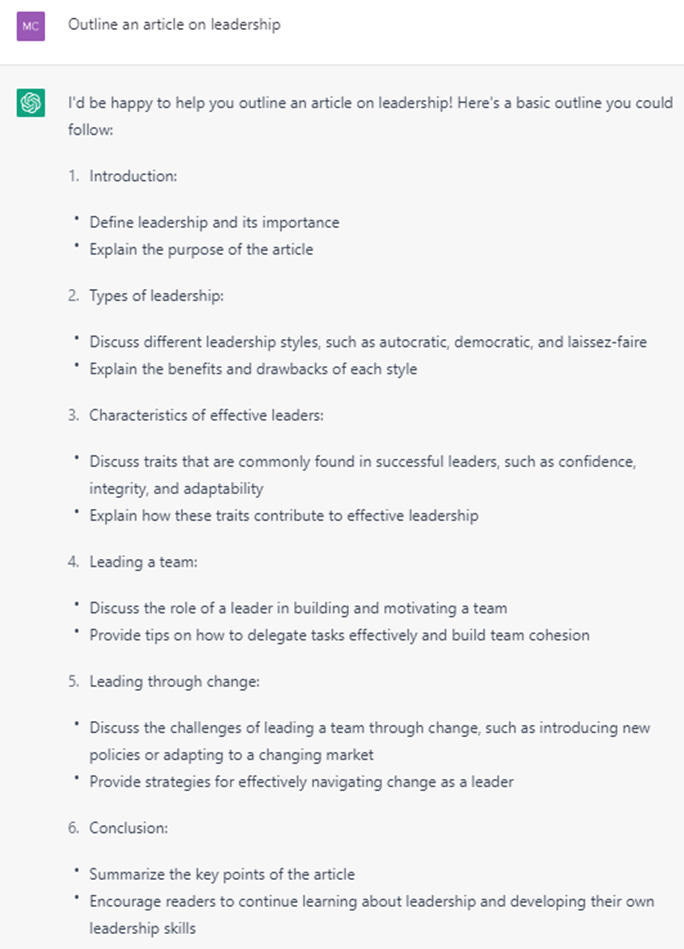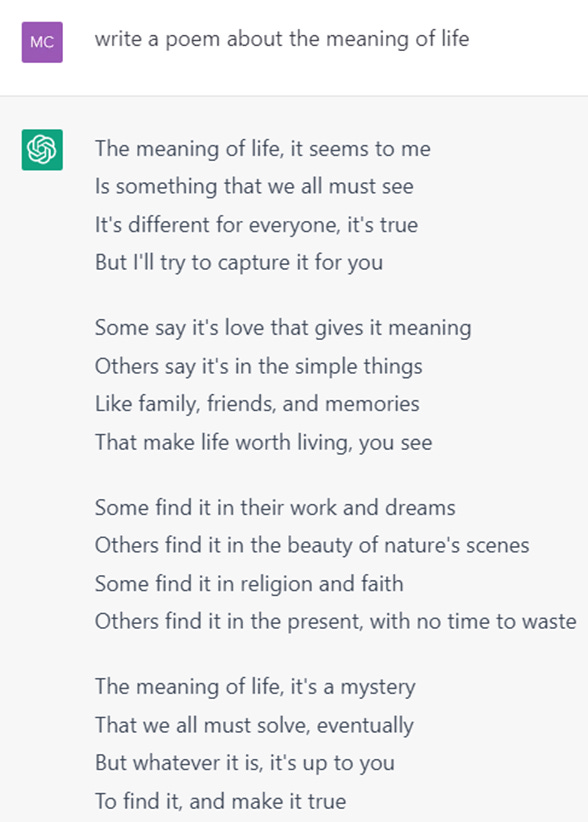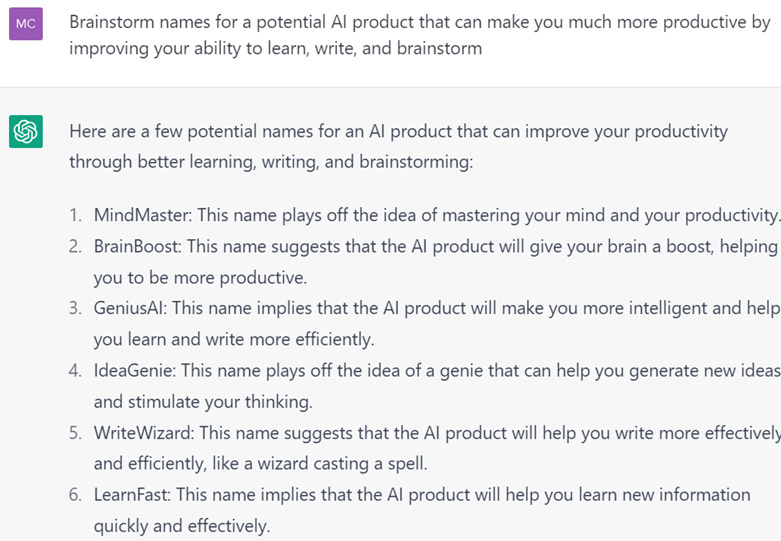ChatGPT Can Give You Superpowers…IF You Use It Wisely
How to Use ChatGPT to Supercharge Creativity, Learning, Writing and More
By now you have heard about ChatGPT. Maybe you’ve ignored it or you’re a little scared of it or maybe you’ve played with it a bit. Or maybe you have charged headfirst into the breakthrough that is this new AI tool. No matter where you are in your ChatGPT journey, this article will be helpful in setting you apart from the pack by illustrating some ways ChatGPT can make you more creative, smarter, and more productive.
What is ChatGPT? Let the tool explain itself to you.
“ChatGPT is a computer program that is designed to have conversations with people. It uses artificial intelligence techniques to generate responses to things that people say, in a way that is similar to how a human might respond. You can talk to ChatGPT through a chat interface, and it will try its best to understand what you are saying and come up with an appropriate response. The goal of ChatGPT is to create a chatbot that can engage in meaningful conversations with people on a variety of topics.”
The paragraph above was generated via this prompt: “Write a short intro on what ChatGPT is so a normal person can understand it.” I had to add the latter portion of the prompt because its first attempted explanation was a word salad of technical jargon. And to be honest, the above description does not scratch the surface of what ChatGPT is. ChatGPT makes the tools we use today look like a jet fighter compared to a wooden club.
When I first heard of ChatGPT I just thought it was yet one more AI tool that could perform some clumsy writing that could help students cheat on homework. I was so wrong. Like Napoleon invading Russia in winter wrong.
I got a hint I was wrong when I read this piece from economist Tyler Cowen. An excerpt:
“Today, those who learn how to use GPT and related products will be significantly more productive. They will lead integrated small teams to produce the next influential "big thing" in learning and also in media. Most current contributors will miss that train almost entirely, just as so many people missed the importance of the internet for learning and also for media. But we still don't know how important this "next big thing" will be, for instance, compared to YouTube.
In the short run, using GPT for ideas and inspiration will be more important than using it for copy. Like blogging, I am happy when people attack it, because that raises the moat surrounding it.”
When Tyler Cowen says something is that influential, you need to check it out, so I did.
I started reading how to use ChatGPT. For example, Cowen had a link in his Marginal Revolution newsletter to these excellent tips by Rob Lennon on how to use the AI tool. Lennon’s thread showed how to use ChatGPT better tactically to get better answers to your prompts. Then I stumbled onto this video from Le-an Lai Lacaba titled, What Is ChatGPT? How To Use It As A Virtual Assistant. In it she provides several ways to use the tool that can take your use of it to the next level by using it as an AI personal assistant. Inspired by her video, I’ve taken some of Le-an’s uses, developed others, grouped these potential uses in broader categories of high-order tasks and then added examples from ChatGPT to illustrate each one. The tasks include:
· General Office Tasks, such as drafting emails, and laying out slide presentation, spreadsheets and processes.
· Writing Tasks, such as outlining and drafting an article or composing poetry.
· Learning by asking questions to get facts or gain insights.
· Teaching by developing a syllabus, learning outcomes or test questions and more.
· Advice, both on how to do things all the way up to offering therapy.
· Brainstorming all kinds of things, like generating lists of names for organizations and products or ideas for blogs.
Below are examples of the above using prompts I gave ChatGPT in these categories. Let’s begin!
General Office Tasks
Writing Emails
Building a Slide Presentation
Creating a Meeting Agenda
Laying out Spreadsheets
Building Processes
Writing Tasks
Outlining an Article
Drafting an Article
No example here (would take up too much space) but a prompt such as “Writing an article on mistakes poor leaders make” would generate text that provides direction for writing an article.
Composing Poetry
(definitely rudimentary but could be the basis for ideas and words that rhyme).
Learning
Asking questions to get facts or gain insights.
Teaching
Creating Learning Outcomes
Generating Test Questions
Advice, Best Practices and (maybe) Therapy
Advice/Best Practices
Therapy
Here are the results of what occurred when Robert Morris used a version of ChatGPT to provide mental health support. The results were good for patients initially but once they found out a computer was involved, they were not thrilled. This points to the need for work on developing the ethics for using this tool and others in different disciplines.
Brainstorming
Name Generation
Article Ideas
Hopefully, these examples should offer you some idea of the potential of ChatGPT to give you a quantum leap of productivity, creativity and learning in almost any area you can imagine. Whether you choose to avail yourself of these new superpowers is up to you.

















It has to be used with caution however. I used it to generate questions and answers for a student quiz bowl contest. This is foundational A&P and for the most part it saved me a ton of laborious pondering about question selection, not to mention typing. It’s easy to get carried away by the ease of what has become a cut and paste exercise, which I nearly did. A few of the answers to questions were egregiously wrong. In one particular Q&A pair, the program insisted that cardiac output is inversely related to blood pressure (the opposite being the case). No matter how I re-worded the question to focus on the simple hemodynamic relationship (not an assumed sympathetic regulatory response, the underlying source of the error I think) the output was the same. So you definitely need to fact check everything.